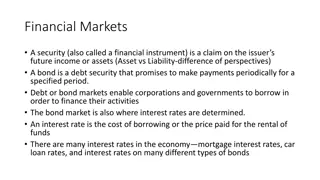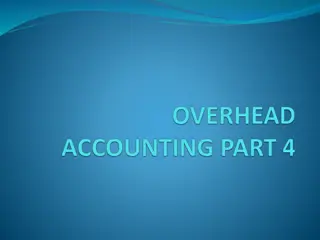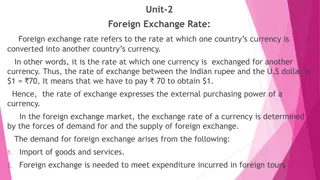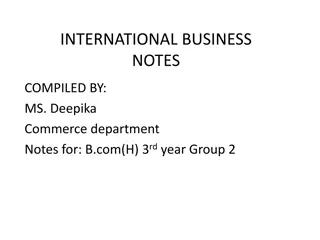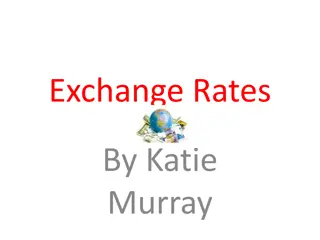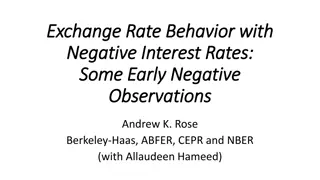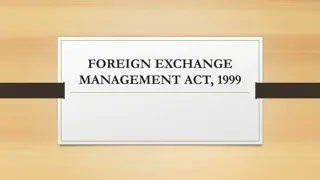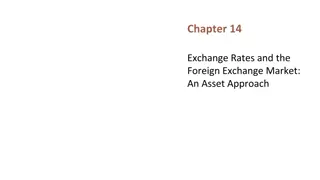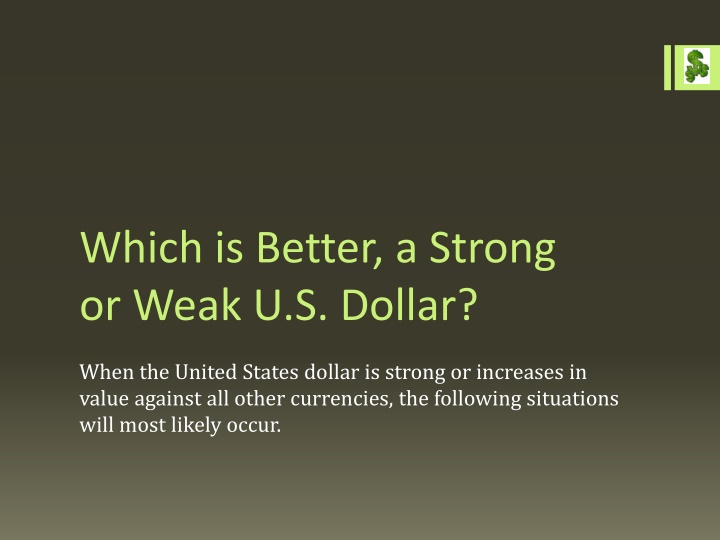
Pros and Cons of a Strong vs. Weak U.S. Dollar
Discover the advantages and disadvantages of a strong and weak U.S. dollar in international trade. Learn how currency fluctuations impact businesses, consumers, and economic indicators like trade deficits and exports.
Download Presentation

Please find below an Image/Link to download the presentation.
The content on the website is provided AS IS for your information and personal use only. It may not be sold, licensed, or shared on other websites without obtaining consent from the author. If you encounter any issues during the download, it is possible that the publisher has removed the file from their server.
You are allowed to download the files provided on this website for personal or commercial use, subject to the condition that they are used lawfully. All files are the property of their respective owners.
The content on the website is provided AS IS for your information and personal use only. It may not be sold, licensed, or shared on other websites without obtaining consent from the author.
E N D
Presentation Transcript
Which is Better, a Strong or Weak U.S. Dollar? When the United States dollar is strong or increases in value against all other currencies, the following situations will most likely occur.
PROS FOR A STRONG U.S. DOLLAR It is cheaper for U.S. businesses to import from foreign countries because the dollar is strong so foreign goods and services will cost less. The consumer will benefit from this since import prices on goods would go down. It would be cheaper for U.S. citizens to travel abroad since the consumer would be getting more for their U.S. dollars. This usually makes things like food, hotels, and souvenirs cost less.
CONS AGAINST A STRONG U.S. DOLLAR Foreign businesses are less likely to import from the United States because they can trade more goods for their money with a different country that has a currency weaker than the dollar. The U.S. is less likely to export goods when the dollar is strong; thus, foreign demand for goods will decrease. When this happens, it tends to hurt American companies by reducing their international sales. Generally, a foreign country will buy agricultural exports cheaper from a country with a weaker currency exchange rate than the U.S. dollar. The result is that American farmers will develop a surplus of crops, which may lead to lower prices. Getting less for what they produce is a disadvantage to farmers. The U.S. trade deficit increases since we are importing more than we are exporting.
When the United States dollar is weak or decreases in value against foreign currencies the following situations will probably occur.
PROS ASSOCIATED WITH A WEAK U.S. DOLLAR When other currencies are strong, relative to the U.S. dollar, international firms will be able to purchase more products from the U.S. resulting in an increase in exports. When we export more goods abroad, we need more people to produce these products, so our employment rate goes up. When we export more than we import, the trade deficit decreases. When our dollar is weak, other countries can purchase U.S. goods and services at a lower price. For that reason, goods like our agricultural products are in high demand and farmers can expect a rise on most grain and livestock prices. A weak dollar attracts foreign investment into the U.S.; thus, our real estate, businesses, and other investments become good investments for international business owners.
CONS ASSOCIATED WITH A WEAK U.S. DOLLAR When our dollar is weak it costs a lot for U.S. businesses to import goods. These costs are passed on to the consumer. When this happens, prices on goods tend to rise. When we get less of a nation's currency for our dollar, it costs American tourists, business people, and students more money to travel abroad. There will be less foreign investment in U.S. Treasury bills used to finance U.S. government expenditures.
Introduction to Business Exchange Rate Activity Name ______________ Go to www.x-rates.com Answer the following questions: 1. Using the above information, determine how many British pounds you could get for ten American dollars? 2. Using the above information, how many lire could you get for eight American dollars? 3. If one pound equals 1.6113 U.S. dollars, how much would 100 pounds cost? 4. If one Canadian dollar equals 0.7651 U.S. dollars, then what would the Canadian dollars cost?

